Pension planning for the self-employed
There are 4.5 million[1] self-employed people in the UK and less than a third have any kind of pension arrangement.[2] That’s a shocking statistic when you consider that State support is shrinking and we’re all living longer.
Of course, saving for a pension when you’re self-employed is not as straightforward as it is for an employed person, who might automatically benefit from a workplace scheme and employer contributions. We’ve outlined some key points below for you to consider.
Don’t rely on the State Pension
Whether you’re employed or self employed you’re entitled to the full basic State Pension (currently £113.10 a week) as long as you’ve paid in 30 years of National Insurance Contributions and you retire after 6 April 2016.[3]
On its own then, State support is unlikely to enable you to maintain your current standard of living into retirement. That’s why it’s imperative for the self-employed to find other ways to provide the additional income needed in retirement.
Start saving early
It’s stating the obvious, but the sooner you start saving into a pension the bigger your potential retirement fund. You’ll also have more time to benefit from the tax relief that’s available.
To highlight the importance of saving early, a 25 year-old male looking to retire at 67 would need to contribute £356 per month in order to achieve a retirement income of £15,000 a year.[4]
If the same man had waited until he was 45 before he started saving, he would need to contribute £739 to achieve the same level of income – an additional £383 per month.[5]
Minimise the amount of tax you pay
One of the main benefits of paying into a pension is the tax relief the savings attract. For example, if you’re a basic rate taxpayer paying £80 into your pension each month, HMRC will effectively add an extra £20 [6] in tax relief.
The maximum amount you can save each year that attracts tax relief (otherwise known as the annual allowance) is £40,000.[7]
Importantly, if your income is low and you’re not able to save the full £40,000 in one tax year, you can carry forward any unused allowance [8] and use it against earnings in the next tax year.
Please note:
- you must have been a member of a registered pension scheme during the years you want to carry forward
- your tax relief is limited by your annual earnings in the year you want to carry forward
- you can only carry forward unused allowance from the three previous tax years
What type of pension is right?
The self-employed can choose from a range of different pension products, including stakeholder pensions, personal pensions and Self Invested Personal Pensions (SIPPs). Each has its advantages and disadvantages – we can advise on which is best for you.
Perhaps the most flexible pensions are stakeholder schemes. They allow you to save as little as £20 per month and the charges are relatively low, which is helpful if you have irregular income levels.
HM Revenue and Customs practice and the law relating to taxation are complex and subject to individual circumstances and changes, which cannot be foreseen.
[1] http://www.resolutionfoundation.org/wp-content/uploads/2014/05/Just-the-job-or-a-working-compromiseFINAL.pdf
[2] http://www.resolutionfoundation.org/wp-content/uploads/2014/05/Just-the-job-or-a-working-compromiseFINAL.pdf
[3] https://www.gov.uk/state-pension/eligibility
[4] https://www.moneyadviceservice.org.uk/en/tools/estimatewhat-you-need-to-save-for-retirement
[5] https://www.moneyadviceservice.org.uk/en/tools/estimatewhat-you-need-to-save-for-retirement
[6] https://www.gov.uk/tax-on-your-private-pension/pensiontax-relief]
[7] http://www.hmrc.gov.uk/tools/pension-allowance/
[8] http://www.hmrc.gov.uk/tools/pension-allowance/
Content reproduced by permission of Openwork Ltd.

